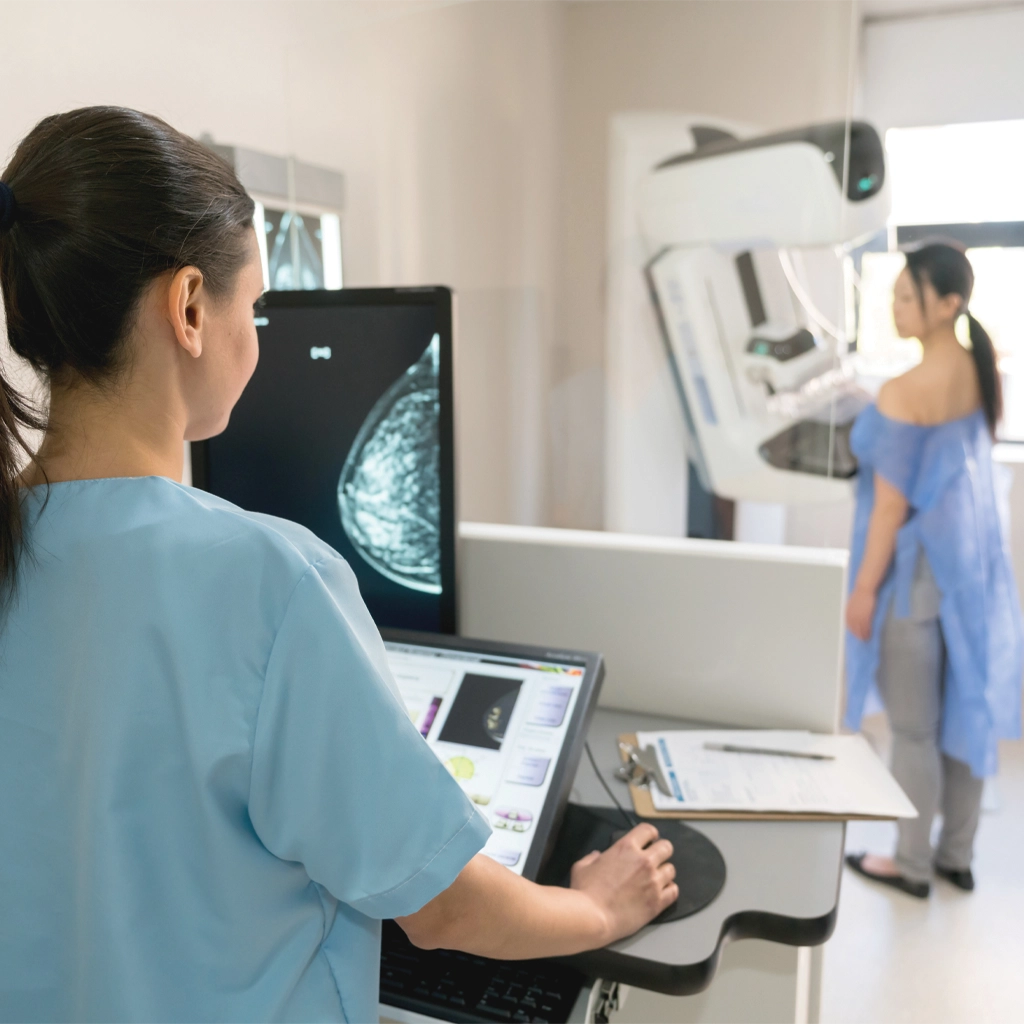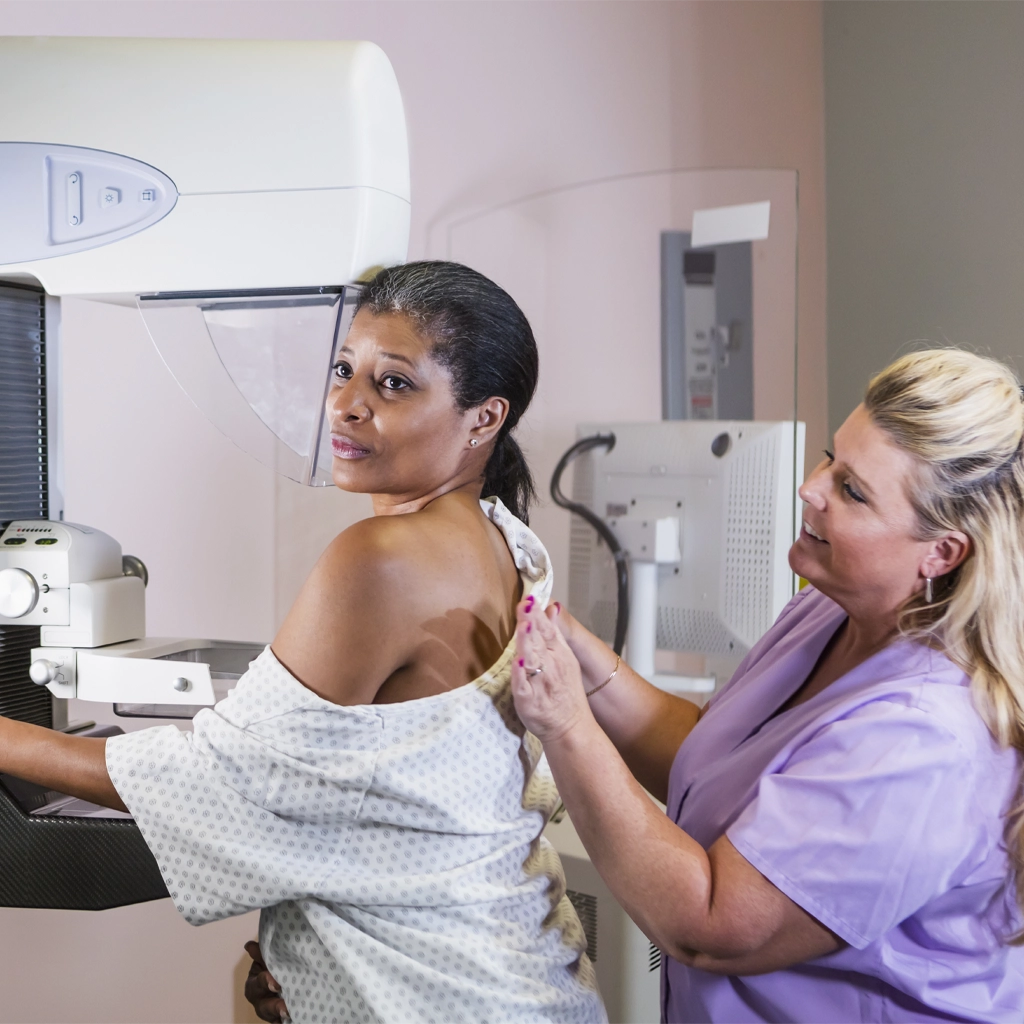What is mammography?
Mammography is an imaging protocol to help detect early breast cancer. Mammograms are proven to find malignant tumors before they become clinically evident. The American Cancer Society (ACS) reports one out of every eight women in the U.S. will develop Breast Cancer. Early detection by way of mammography, regular self breast examination, and regular examination by a physician can significantly increase the chance of survival by up to 95%. The ACS recommends annual mammography for women over the age of 40.
There are two types of mammograms: screening mammograms and diagnostic mammograms.

Screening Mammography
Screening mammography is a radiological examination recommended annually for women over 40 to detect breast cancer. A screening mammogram is performed when there is no specific complaint or symptoms.
It is also recommended in some cases for women at an earlier age when they are considered to be at high risk. Symptomatic women and women with a previously detected abnormality, for whom short interval follow-up or further evaluation has been recommended, are not candidates for screening mammography.
Diagnostic Mammography
Diagnostic mammography is a radiographic examination performed to evaluate patients who have signs and/or symptoms of breast disease, imaging findings of concern, or prior imaging findings requiring a specific follow-up.
Diagnostic mammography may be appropriate for patients:
- With a specific focus of clinical concern including, but not limited to, mass, induration, auxiliary lymphadenopathy, some types of nipple discharge, skin changes, or persistent focal areas of pain or tenderness.
- With a possible radiographic abnormality.
- Recommended for short-interval follow-up (e.g., less than 1 year) for probable benign radiographic findings as defined by the ACR Breast Imaging Reporting and Data System (BI-RADS®).
- Whose examination requires direct involvement of the radiologist for special views, physical breast examination, or consultation.
- Who have been treated for breast cancer. At the discretion of the facility, asymptomatic women may undergo screening or diagnostic mammography.
Preparation for Diagnostic Mammography
Preparation for your mammogram is important. If you have old mammograms done at another facility, please bring them to the exam. Our radiologist would like to compare the images. It is important that you describe any breast symptoms to the technologist before the study. Do NOT wear any deodorant, talcum powder or lotion on the upper body the day of the exam. If you are or may be pregnant, please inform the staff immediately.
Exam Length
The exam length is usually 10-20 minutes.
Exam Results
After your exam, the radiologist will review your images, and a report will be sent directly to your physician. Reports are available within 24 to 72 hours.
